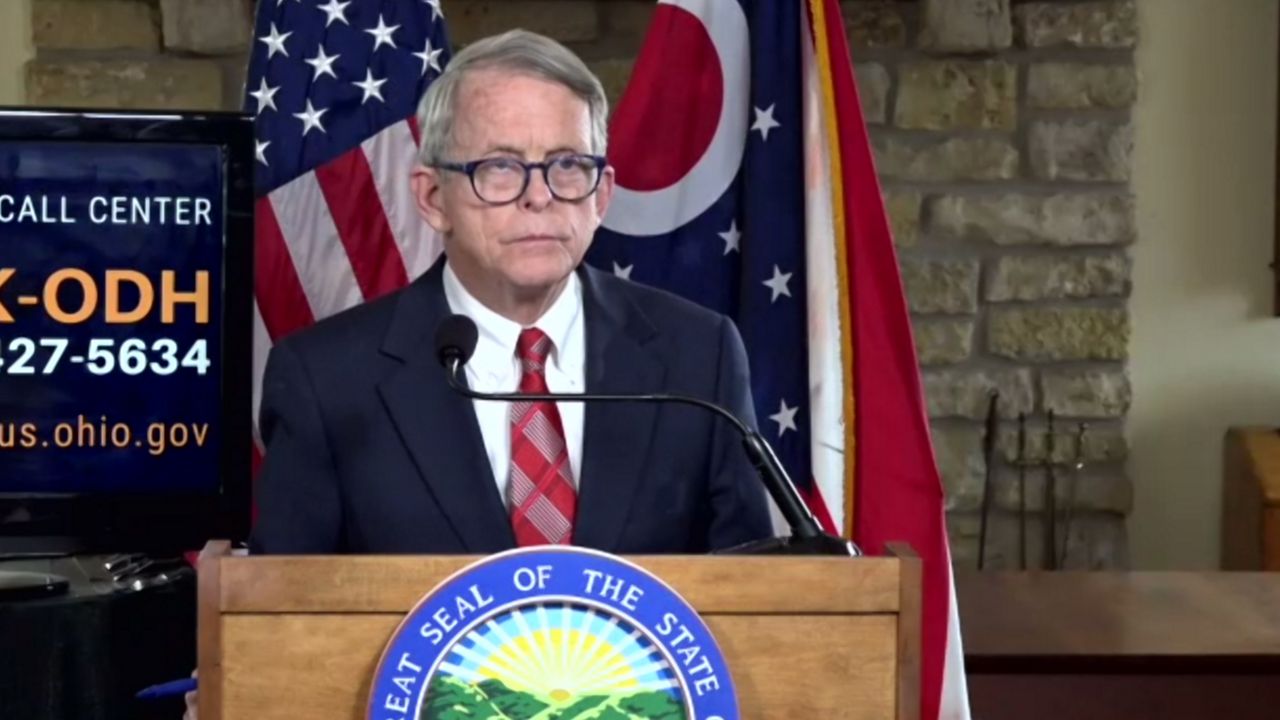COLUMBUS, Ohio — Ohio reported 11,885 COVID-19 cases Monday, an increase of more than 3,000 from the previous record, but Gov. Mike DeWine explained the numbers come with an asterisk.
For the last six days, coronavirus cases in Ohio have been incomplete due to a backlog of positive tests that were not promptly added to the state's case tallies. Further, Gov. Mike DeWine revealed Monday that two large laboratories, Mercy Health and Cleveland Clinic, did not report tests for two days.
He said the “artificially high” numbers are a result of these reporting delays.
“This particular jump is caused at least in part and maybe fully by something that happened two days back,” the governor said. “Two of our bigger laboratories, that reporting did not go in for two days.”
A Cleveland Clinic official said 970 of its caregivers are sidelined as they recover from the virus or quarantine. These staffing issues have created complications as the staff in all sorts of health care roles in Ohio simultaneously face more work than ever as the number of Ohioans affected by the virus surges.
Dr. Robert Wyllie, Cleveland Clinic's chief of medical operations, said health care workers are contracting the virus outside of work. He said infection rates parallel spread in the state.
“When you have 970 caregivers plus who are out, that means it is starting to affect our ability to care for patients. What we do to accommodate that is we start closing down some services," he said.
Hospitals are reevaluating whether they can advance with elective surgeries that may require hospital says. In Central Ohio, seven hospitals have suspended elective surgeries, but most are continuing to perform them for now, officials said.
As for the backlog of antigen testing, the state was working its way through 12,000 tests last week. That number has risen to 15,000.
The state has reported more than 7,000 daily cases on all but one of the days since case numbers have been affected by the backlog.
DeWine confirmed Monday that 3 in 4 of the antigen tests are coming back positive, meaning about 9,000 cases were unreported last week.
The bottom line: Despite incomplete reporting, last week's numbers were record highs for Ohio as the coronavirus outbreak continues to worsen in the state.
The governor says hospitalizations may be the most useful metrics while the case numbers are clouded.
There were a record of 4,358 COVID-19 patients receiving hospital care Monday, a 59% increase from two weeks ago, DeWine said. There were 1,079 patients in ICU units.
Dr. Andrew Thomas, chief clinical officer at Ohio State Wexner, said Monday hospitals are “trading” patients back and forth like never before during the pandemic.
“We're having to do what we call lateral transfers,” he said. “Frankly they just hit their capacity. One day it's one hospital, two days later it's going to be the other hospital doing the favor back.”
Thomas said there is high concern about regions seven and eight, where he noted that 40-50% of all ICU patients and 50% of all patients on ventilators are there for COVID-19.

Dr. Richard Lofgren, president of UC Health, said nearly half of hospitals in region three are reporting a nursing shortage.
Two weeks ago, the governor said he would have to close indoor dining if trends continued. After touting perceived progress with mask compliance following a tightening of the state's mask mandate, the governor said the state could avert a shutdown.
The mask mandate is among a series of measures the governor calls a "slow down," along with a curfew from 10 p.m. to 5 a.m.
DeWine says he is optimistic the new measures will slow the spread, but asked for more time to see results in the case numbers.
With hospitals transferring patients and as of Monday beginning to shuffle ventilators and oxygen equipment as they grapple with the challenges of caring for the influx of COVID-19 patients, the testing report released Monday shows no signs of a break on the horizon for the state's hospitals.
Wylie said Cleveland Clinic is preparing for a 50 percent increase in patients by mid December.



